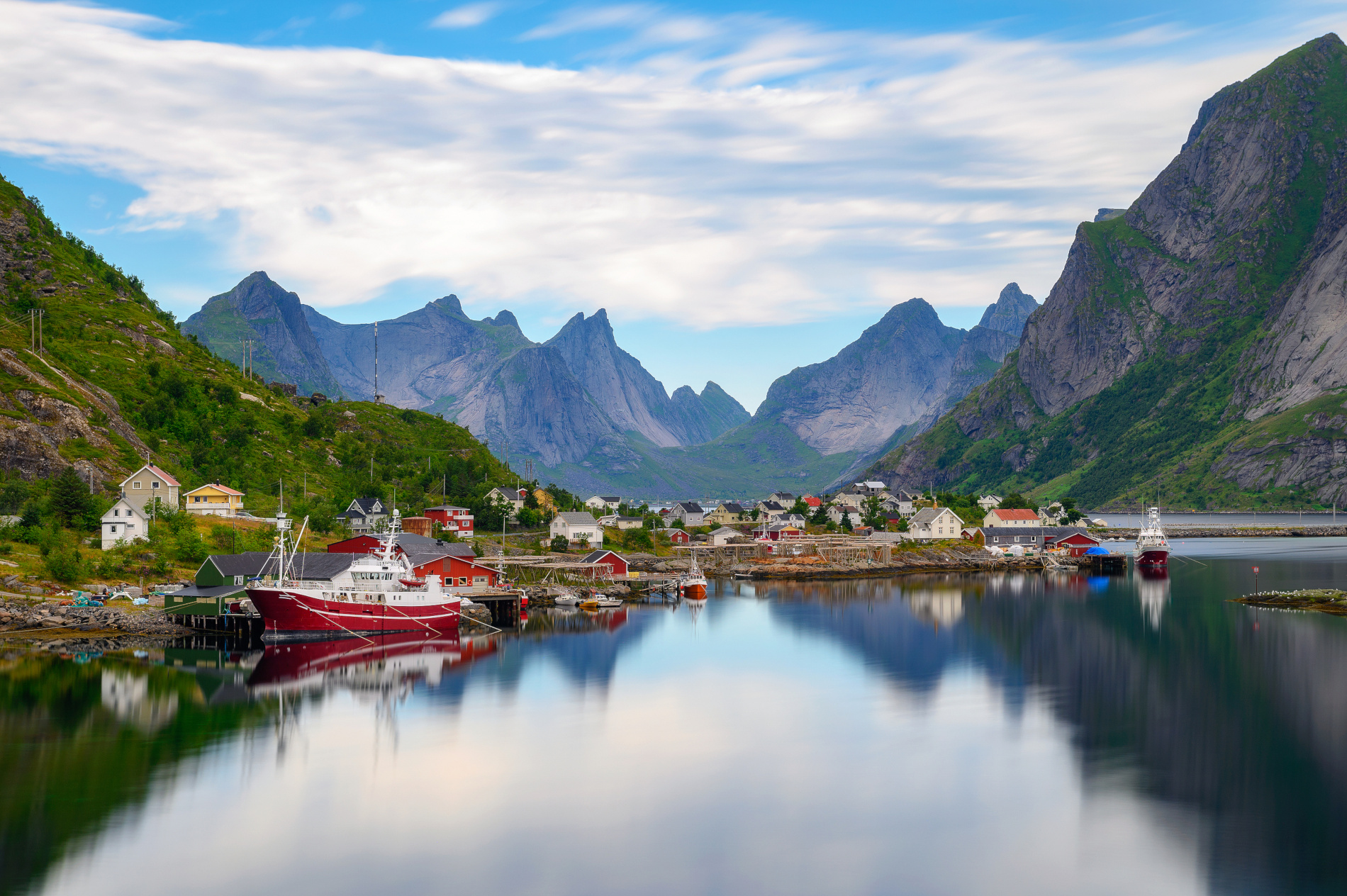Located 185 miles north of the Arctic Circle, the district of Lofoten, Norway might not spring to mind when you think of dive trips — but it should. Encompassing a group of seven islands, this remote corner of the world offers cold-water diving that rivals most tropical dive destinations any day. Here’s how to get the most out of diving in Lofoten Norway.
How to get there
Five of the islands in the Lofoten area are connected by the E10 National Scenic Route and multiple bridges, which in turn connects with Norway’s main north-south highway (the E6). Alternatively, you can take a ferry from Bodø on the mainland, or combine the two and drive part of the way and use the ferry part way. Alternatively, you can take a small airplane out to the islands. This is the fastest way to get there, but also the most expensive.
What to see on land
Norway has some spectacular beaches — ready to compete against any tropical destination. White beaches meet turquoise water while surfers frolic in the chilly waves and backpackers camp on the beach.
Lofoten offer numerous spectacular hikes, some of which end up on stunning, secluded beaches accessible only by foot.
Finally, because it’s so remote there is very little artificial light, making Lofoten the perfect place to view the Northern Lights when the cloud cover isn’t too dense.
What to see underwater
There are a variety of interesting dives in the area. Perhaps one of the most unusual dives is through the kelp forests at the Grand Canyon. Two large, vertical rock faces, covered in dead men’s fingers, create a colorful passage to the bottom of the canyon where large kelp creates a forest.
There are a few wrecks around Lofoten. Hadsel is a passenger liner that sank near Reine in 1958. At 130 feet (40 meters) at the bottom, Hadsel is one of the area’s deeper wrecks. Just off Ballstad is an Icelandic trawler that sank in 2002. The MV Gudrun Gisladottir lies at a depth of between 88 and 130 feet 27 to 40 m). Other wrecks include the SS Ramø, the SS Hamburg, the MR-25 (a German minesweeper), the MV Karlshorst and the MV Siw-Aina in Svolvær. The MV Siw-Aina is the shallowest of the lot and the easiest to dive.
The waters around Lofoten are also home to minke whales, pilot whales, seals and orcas (during autumn and winter months), so keep your eyes peeled for visitors on your dives.
Seasonality
The weather around Lofoten is quite mild due to the North Atlantic Current, the Norwegian Current and the Gulf Stream. The area rarely sees temperatures below freezing (even in winter) while the average temperature in summer is around 61 F (16 C).
While rain is possible year-round, the wettest months fall between September and November. Water temperatures in the area range from 39 F (4 C) in December to between 50 and 55 F (10 to 13 C) during the summer.
Spectacular diving in clear water along colorful walls, in and around wrecks and through kelp forests is all part of what you can expect while diving in Lofoten Norway. All of this, without a large crowd of tourists and the chance to see the Northern Lights — what more could a diver ask for?

